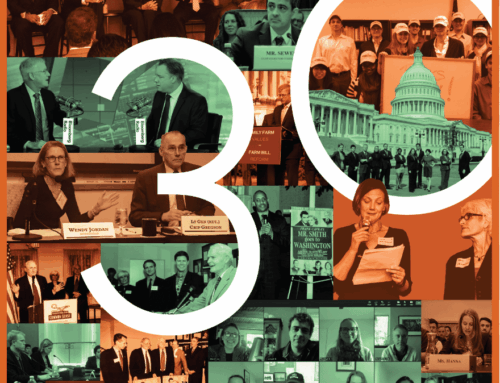
Two weeks ago we played an April Fool’s trick on Weekly Wastebasket readers, listing various actions policymakers in Washington had taken and how happy we were about it. Sorry about that. We did put a ringer in the list. An item that hadn’t happened yet but we hoped would soon. If you recall, #7 read: “Congress put a reformed tariff relief system in place that doesn’t rely on the earmark-esque, pay-to-play system of old.”
Well guess what the leaders of the House Ways and Means Committee rolled out in a bipartisan fashion this week? Yes, dear reader, a reformed tariff relief system in the form of the “American Manufacturing Competitiveness Act of 2016.”
The Presidential election has featured debates over trade and tariffs, but very little about how tariffs actually work. When the nation was founded, tariffs on imported goods were the principal source of revenue for the fledgling government. In fact, the forbear of the U.S. Coast Guard, the Revenue Cutter Service, was formed in 1790 to ensure tariffs were being collected. They are still a significant source of revenue, generating $35 billion in 2015. Without going deep into a debate on trade, tariffs can also increase costs for domestic manufacturers who import goods and materials So a process was created to provide some tariff relief for companies who have to import certain goods and materials because they are not produced domestically.
There were certain restrictions on the tariff relief: it couldn’t exceed $500,000 per item, had to be administrable at the border, and as mentioned before, could only apply to items not produced domestically. Apparently, there aren’t many American-made “decorative outdoor bamboo garden torches,” for example.
But there was one problem with the system. The companies had to go to Congress to get an individual bill for each item, which was then reviewed by the International Trade Commission (ITC) to ensure it met the above criteria before coming back to Congress and packaged with hundreds of other tariff relief measures and enacted as Miscellaneous Tariff Bill (MTB). But it started with a company and/or lobbyist asking the lawmaker for the favor and that smacks of the pay-to-play atmosphere of earmarks. And also similar to earmarks in many cases only one company would benefit from the tariff relief.
Congress evidently agreed because when earmark disclosure rules were implemented in 2009, the MTB process was also required to disclose the lawmaker requesting the provision. And MTBs were also subject to the moratorium on earmarks that began in 2011.
But there are some differences. For the most part, spending earmarks directed cash that was already being appropriated for agencies to powerful lawmakers’ pet projects. Without earmarks, money is still going to those agencies to be allocated. But in the case of the MTB, the moratorium stopped the whole process. It was an amalgamation of earmarks. But there was also a need for tariff relief. Companies were paying import tariffs on goods that had no domestic competition.
It took a couple years, but the new process the Ways and Means Committee revealed makes a lot of sense and removes the pay-to-play aspects of the old system. Instead of going to Congress, companies will submit their tariff relief requests directly to the ITC, which would vet them as they had before. Information on each request would be available online, and ITC would submit a report to the House Ways and Means and Senate Finance Committees with their recommendations. The Committees would then draft legislation that reflected the ITC’s report. Provisions could be eliminated, but none could be added.
Sounds good to us. That’s why we joined with nine of our fiscal allies and wrote the Ways and Means Committee to tell them so. “These important procedural changes should serve to eliminate any concerns about the parochialism and unethical behavior that were endemic to the earmarking process. Additionally, they add unprecedented transparency, as all correspondence between businesses, the ITC, and Congress would be made easily available to the public in real time.”










